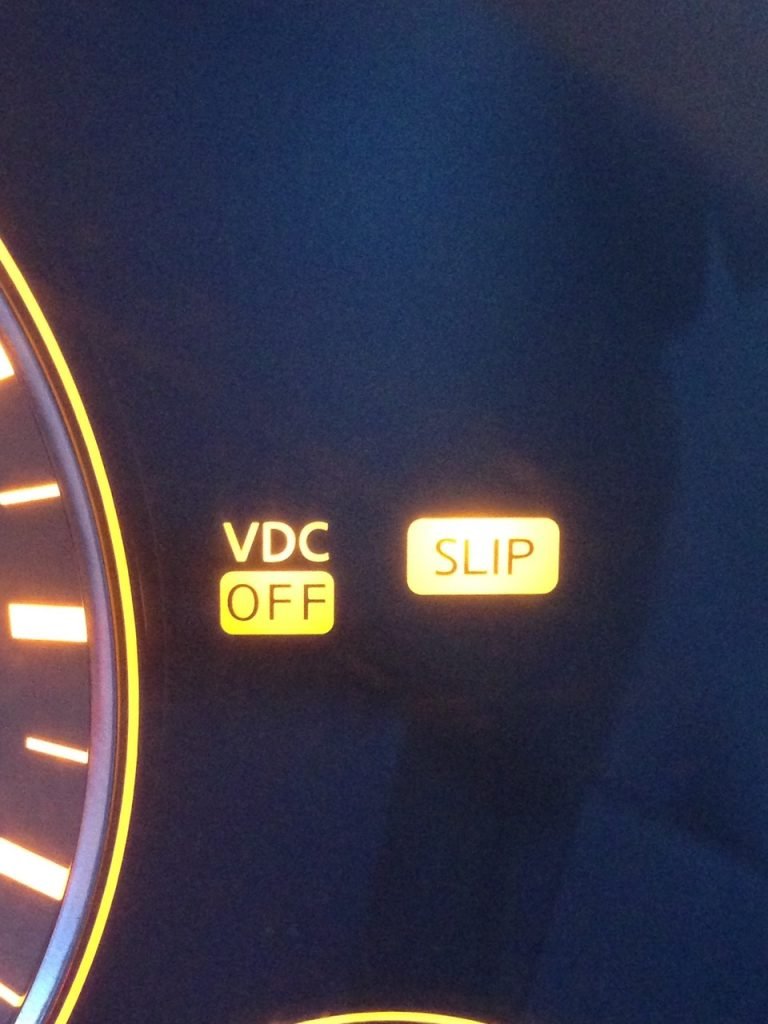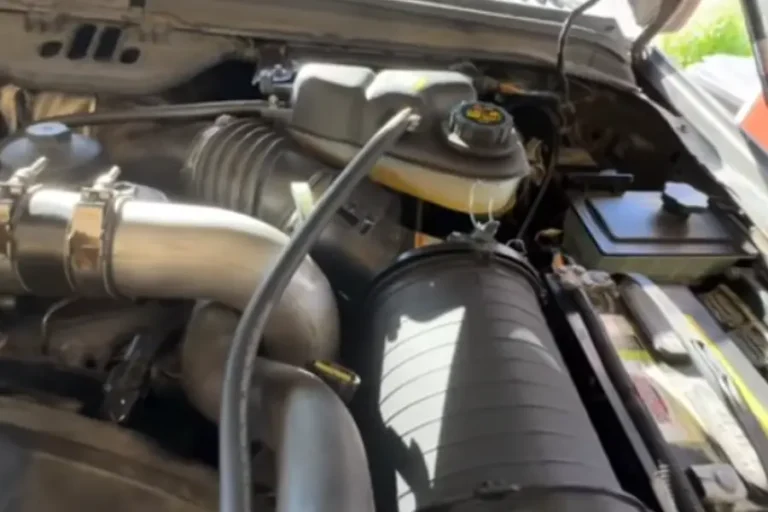What does VDC Warning Light Mean on my car? – [Explained]
The VDC warning light is a vital indicator found in modern vehicles, designed to alert drivers to potential problems with the stability control system. If you want to keep things under control while driving, you need to know what this warning light means.
This article will discuss the VDC warning light in detail, including its causes, consequence, and recommended solutions.
What does the “VDC” light mean?
VDC, which stands for “Vehicle Dynamic Control,” is a warning light that comes on whenever there is a problem with the car’s stability control.
The stability control system aids in maintaining control and stability in a variety of driving conditions, such as on slick roads or when making sharp turns.

When the VDC warning light comes on in the dashboard, it usually means that the vehicle’s stability control system or a component of it is malfunctioning.
Depending on the vehicle, the specific cause of the issue may be a faulty sensor, an issue with the anti-lock braking system (ABS), or a problem with the traction control system.
The anti-lock brakes in your car collaborate with Vehicle Dynamic Control (VDC) to improve traction. It’s possible that the brake pedal will vibrate when using VDC. This indicates that the system is operating normally.
A blinking VDC Warning Light indicates that the vehicle’s traction control system is being activated. When you initially turn on your car, the VDC Warning Light will come on for a few seconds. Only if the light remains on will it be an issue.
How Does The VDC System Work?
Vehicle Dynamic Control is a system that monitors the driver’s inputs by making use of the car’s different sensors.
This also accounts for the state and motion of the vehicle. In slippery conditions like snow, ice, or rain, a driver without a VDC system is more likely to lose control of their car. In those situations, the system can help the driver out by slowing the engine or braking certain wheels.
The VDC will often apply brakes to each individual wheel to prevent slipping. Understeering is corrected by VDC applying brakes to the vehicle’s outer front wheel. Although VDC does not control the vehicle’s direction, it does provide guidance to make driving easier.
Another sign, the SLIP indicator, will flash on your instrument panel whenever the VDC system is active. When traction control is not working properly, this indicator will become illuminated.
VDC evaluates the following aspects of the driver’s input:
- angle of the wheel used to steer
- how the brake pedal is set
- the engine’s manner of operation
- the gear that is currently used
What Happens If You Turn Off The Vehicle Dynamic Control System?
If the stability control system is not active—for example, if the traction control or anti-lock brake systems are malfunctioning—the VDC OFF light indicator light on the dashboard will light up.
Your vehicle’s VDC and traction control systems will be disabled if you use the specific VDC off switch while driving. When wheel spin is detected, the SLIP light will flash.
Turning off the Vehicle Dynamic Control (VDC) system deactivates the car’s stability control functions, which are there to help the driver keep a firm grip on the wheel.

What Causes The VDC Warning Light To Illuminate?
Common problems that trigger the VDC warning light include a faulty ABS wheel sensor, a faulty steering angle sensor, or insufficient brake fluid. It may also appear if you are traveling on a poor-quality road. In uncommon instances, it may be caused by a malfunctioning steering rack or control module.
Bad Sensors in the Wheels
Input from wheel speed sensors is used by the VDC system to track how fast each wheel is turning. The VDC warning light can come on if there is an issue with the wheel speed sensors. This could be due to a malfunctioning sensor or a frayed electrical connection.
ABS system fault
Since the VDC system is intertwined with the ABS system, an issue with the ABS can also trigger the VDC warning light. The ABS hydraulic unit, pump, and/or control module may be at fault.
Low brake fluid level.
The VDC warning light may come on if the braking fluid level is too low. Possible causes include a leak or faulty brakes. Even if your brakes are not leaking, the brake fluid level in the reservoir will decrease as your brakes deteriorate.
Bad ECU
Numerous sensors constantly communicate to the car’s computer. The computer processes sensor data. The ECU cuts wheel power to correct slippage. The VDC light can come on if the ECU fails to read sensor messages.
Defective Steering Angle Sensors
Traction-controlled wheels include steering angle sensors. These sensors measure wheel angle while driving. The sensors are prone to fail.
If sensors fail or become clogged, the VDC light will illuminate. This can happen on flat ground without traction control.
Bad Alternator
Your car’s systems, such the ECU and VDC, need power. The vehicle’s alternator supplies that electricity.
Alternators charge the car’s battery, which powers its electrical systems. Thus, alternator issues are serious and cause VDC waring light to appear.
Other causes
There are a few other reasons why the VDC light can come on in your vehicle in addition to the ones that have already been listed.
- Frayed ABS sensor cables or faulty yaw rate sensor wires.
- Low quality road
- Hydraulic unit or acceleration sensor terminal oxidation.
- Poorly fitting tires.
- Misaligned wheels
- Tired out brake pads.
How Can You Fix the VCD Warning Light?
Once normal traffic conditions have been restored, the signal should switch off if it is only on because of the road you are on. This doesn’t need fixing. However, if a faulty sensor is to blame for the VDC indicator’s illumination, a replacement will be required.
- Find the cause before fixing the VDC light. Check tire pressure and condition. Low tire pressure or uneven wear might affect stability control and trigger the VDC warning light.
- However, you will need to replace the sensor if the VDC light is on because of a malfunction. Cleaning the sensors is sometimes an option.
- Restarting the car may fix the VDC warning light. Turn off the car, wait a few minutes, and restart it. If the warning light stays on, take action.
- The VDC system often works with the ABS (anti-lock braking system), so make sure it’s working. Check dashboard ABS warning lights. Inspect and fix the ABS system if there are other ABS faults.
- The best way to fix the VDC warning light is to take your automobile to a mechanic or dealership. They can pinpoint the issue. Error codes, system testing, and component inspections can pinpoint the problem.
- The mechanic will offer repairs or replacements after locating the VDC warning light. Sensor, wiring, module, and other system issues may need fixing.
Does All Cars Have VDC System?
Not all automobiles have VDC systems. VDC availability depends on vehicle make, model, and trim level. Newer vehicles, especially those with advanced safety and stability control, have VDC systems.
Different car manufacturers have different stability control names. Some manufacturers call it Electronic Stability Control (ESC), Dynamic Stability Control (DSC), or Vehicle Stability Assist (VSA). These systems help preserve control and stability in diverse driving circumstances.
Modern Cars With VDC:
- Infiniti QX 50, QX 55 QX 60
- Nissan Murano and Pathfinder
- SubaruWRX and WRX STI
- Some Alfa Romeo models like 159 Sportwagon
How Much Does It Cost To Fix A VDC System?
VDC system repairs can be expensive depending on the severity of the damage.
The typical price range for system repairs is $700.00 to $1,600.00.
If you experience a serious problem with your VDC, you may have to spend up to $1600 to fix the entire system.
Certification: BSc in Mechanical Engineering
Education: Mechanical engineer
Lives In: 539 W Commerce St, Dallas, TX 75208, USA
Rasel is an auto mechanic student and writer with over half a decade of experience in the automotive field. He has worked with top automotive brands such as Lexus, Quantum, and also owns two automotive blogs autocarneed.com and taxiwiz.com.
